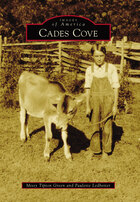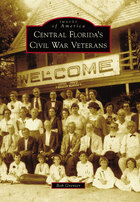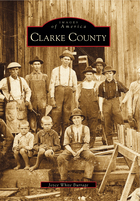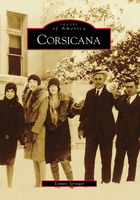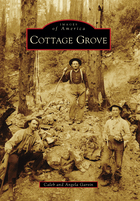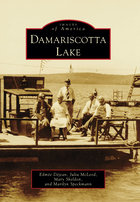Browse Titles - 77 results
2. Stores and Mills
written by Missy Tipton Green and Paulette Ledbetter; in Cades Cove, Images of America (Charleston, SC: Arcadia Publishing, 2011), 25-32
Cades Cove came into existence in 1821, when William “Fighting Billy” Tipton was granted 1,280 acres of fine fertile land in the first recorded legal land title to Cades Cove following the Calhoun Treaty of 1819. The area was established as the 16th Civil District of Blount County. At its peak in 1900, the cen...
Sample
written by Missy Tipton Green and Paulette Ledbetter; in Cades Cove, Images of America (Charleston, SC: Arcadia Publishing, 2011), 25-32
Description
Cades Cove came into existence in 1821, when William “Fighting Billy” Tipton was granted 1,280 acres of fine fertile land in the first recorded legal land title to Cades Cove following the Calhoun Treaty of 1819. The area was established as the 16th Civil District of Blount County. At its peak in 1900, the census showed that there were 125 families living in the cove and over 700 individuals. The Cades Cove people were self-sufficient and had...
Cades Cove came into existence in 1821, when William “Fighting Billy” Tipton was granted 1,280 acres of fine fertile land in the first recorded legal land title to Cades Cove following the Calhoun Treaty of 1819. The area was established as the 16th Civil District of Blount County. At its peak in 1900, the census showed that there were 125 families living in the cove and over 700 individuals. The Cades Cove people were self-sufficient and had many conveniences that others did not. Some residents made their own water system, and there were blacksmiths, coffin makers, farmers, storekeepers, postmasters, and many more occupations—there was no need to go out of their beloved cove for anything. In the late 1920s and early 1930s, this land was obtained by the State of Tennessee through eminent domain, and it later became the Great Smoky Mountains National Park.
Show more
Show less
Field of Study
American History
Content Type
Book
Author / Creator
Missy Tipton Green, Paulette Ledbetter
Date Published / Released
2011
Publisher
Arcadia Publishing
Series
Images of America
Topic / Theme
Grist mills, Shops, Valleys
Copyright Message
Copyright © 2011 by Missy Tipton Green and Paulette Ledbetter
×
Images of America, California's Whaling Coast
in Images of America (Charleston, SC: Arcadia Publishing, 2014), 128 page(s),
Source: www.arcadiapublishing.com
Source: www.arcadiapublishing.com
Yankee whaling, shore whaling, and modern whaling were sometimes occurring simultaneously. Each type of whaling went through periods of discovery, stability, and then a gradual decrease as the products lost their markets or the number of whales began to wane as some species moved toward commercial if not actual ex...
Sample
in Images of America (Charleston, SC: Arcadia Publishing, 2014), 128 page(s),
Source: www.arcadiapublishing.com
Source: www.arcadiapublishing.com
Description
Yankee whaling, shore whaling, and modern whaling were sometimes occurring simultaneously. Each type of whaling went through periods of discovery, stability, and then a gradual decrease as the products lost their markets or the number of whales began to wane as some species moved toward commercial if not actual extinction due to over-fishing. Small whaling operations from California, called shore whaling, continued from the 1850s until Secretary...
Yankee whaling, shore whaling, and modern whaling were sometimes occurring simultaneously. Each type of whaling went through periods of discovery, stability, and then a gradual decrease as the products lost their markets or the number of whales began to wane as some species moved toward commercial if not actual extinction due to over-fishing. Small whaling operations from California, called shore whaling, continued from the 1850s until Secretary of Commerce Maurice Stans (1969–1972) whistled down the industry in 1971.
Show more
Show less
Field of Study
American History
Content Type
Book
Date Published / Released
2014
Publisher
Arcadia Publishing
Series
Images of America
Topic / Theme
Maritime commerce, Whales, Whaling
Copyright Message
Copyright © 2014 by Dale Vinnedge
×
6. Volusia, the Lighthouse Keeper, and the Sugar Mill
written by Bob Grenier; in Central Florida's Civil War Veterans, Images of America (Charleston, SC: Arcadia Publishing, 2014), 63-72
Sample
written by Bob Grenier; in Central Florida's Civil War Veterans, Images of America (Charleston, SC: Arcadia Publishing, 2014), 63-72
Field of Study
American History
Content Type
Book
Author / Creator
Bob Grenier
Date Published / Released
2014
Publisher
Arcadia Publishing
Series
Images of America
Topic / Theme
Grist mills, Veterans (Armed services), Lighthouses, U.S. Civil War, 1861-1865
Copyright Message
Copyright © 2014 by Bob Grenier
×
4. Mills: Water, Steam Power, and Electricity
written by Chris Gilkey and William T. Turner; in Christian County, Images of America (Charleston, SC: Arcadia Publishing), 75-82
"In the years since Christian County was founded more than 210 years ago, the rural area—including many small communities and the county seat of Hopkinsville—has become a historic treasure of various architectural styles. Water-powered mills are representative of the first local industry. Blacksmith shops, fol...
Sample
written by Chris Gilkey and William T. Turner; in Christian County, Images of America (Charleston, SC: Arcadia Publishing), 75-82
Description
"In the years since Christian County was founded more than 210 years ago, the rural area—including many small communities and the county seat of Hopkinsville—has become a historic treasure of various architectural styles. Water-powered mills are representative of the first local industry. Blacksmith shops, followed by several small craft shops, preceded the largest 19th-century industry: the manufacturing of Mogul brand farm wagons. A plow fa...
"In the years since Christian County was founded more than 210 years ago, the rural area—including many small communities and the county seat of Hopkinsville—has become a historic treasure of various architectural styles. Water-powered mills are representative of the first local industry. Blacksmith shops, followed by several small craft shops, preceded the largest 19th-century industry: the manufacturing of Mogul brand farm wagons. A plow factory and a butter manufacturing facility were also two of several short-lived industrial attempts to make a great financial success. Throughout the 20th century, changing social and economic growth brought the demolition of many priceless architectural examples. This title presents a close observation of many of these vanished landmarks, with old churches, public buildings, country stores, schools, and road toll gates providing a glimpse into the county’s past.
"
Show more
Show less
Field of Study
American History
Content Type
Book
Author / Creator
Chris Gilkey, William T. Turner
Publisher
Arcadia Publishing
Series
Images of America
Topic / Theme
Grist mills, Industrial buildings
Copyright Message
Copyright © 2008 by Chris Gilkey and William T. Turner
×
7. Life in General
written by Joyce Burrage; in Clarke County, Images of America (Charleston, SC: Arcadia Publishing, 1998), 87-100
Clarke County is a beautifully wooded and peaceful spot in west Alabama with a long and rich history. Bounded on the east by the Alabama River and on the west by the Tombigbee River, Clarke County’s rich timberlands serve as the source for pine timber markets throughout the world. The fantastic hunting and fishi...
Sample
written by Joyce Burrage; in Clarke County, Images of America (Charleston, SC: Arcadia Publishing, 1998), 87-100
Description
Clarke County is a beautifully wooded and peaceful spot in west Alabama with a long and rich history. Bounded on the east by the Alabama River and on the west by the Tombigbee River, Clarke County’s rich timberlands serve as the source for pine timber markets throughout the world. The fantastic hunting and fishing in the county are known throughout the South. Clarke County’s history includes the story of the Mitcham War, a period of unrest in...
Clarke County is a beautifully wooded and peaceful spot in west Alabama with a long and rich history. Bounded on the east by the Alabama River and on the west by the Tombigbee River, Clarke County’s rich timberlands serve as the source for pine timber markets throughout the world. The fantastic hunting and fishing in the county are known throughout the South. Clarke County’s history includes the story of the Mitcham War, a period of unrest in 1893 that reached state-wide proportions in notoriety. The county’s history is one largely comprised of the working men and women who have contributed to the cultural tapestry of the area. This visual journey begins around the time of the earliest woodcut of the courthouse in Grove Hill, built in 1832, and continues through the 1940s. Many of the images in this collection have never before been published. These fascinating glimpses into Clarke County’s past are combined with a well-researched text to uncover many long-forgotten stories and a colorful cast of characters.
Show more
Show less
Field of Study
American History
Content Type
Book
Author / Creator
Joyce Burrage
Date Published / Released
1998
Publisher
Arcadia Publishing
Series
Images of America
Topic / Theme
Grist mills, Town life
Copyright Message
Copyright © 1998 by Joyce White Burrage
×
2. Clinton and Its Mills
written by Sally A. Freedman; in Clinton, Flemington, and Lambertville, Images of America (Charleston, SC: Arcadia Publishing, 2003), 19-30
Life among the rolling hills of northwest New Jersey and in the three small towns that became centers of that area's population has been faithfully recorded by residents since the Civil War, capturing the rural character of their landscape. The rich heritage of descendants of English, Dutch, and German settlers in...
Sample
written by Sally A. Freedman; in Clinton, Flemington, and Lambertville, Images of America (Charleston, SC: Arcadia Publishing, 2003), 19-30
Description
Life among the rolling hills of northwest New Jersey and in the three small towns that became centers of that area's population has been faithfully recorded by residents since the Civil War, capturing the rural character of their landscape. The rich heritage of descendants of English, Dutch, and German settlers in the Hunderton County population centers of Clinton, Flemington, and Lambertville is presented here.
Field of Study
American History
Content Type
Book
Author / Creator
Sally A. Freedman
Date Published / Released
2003
Publisher
Arcadia Publishing
Series
Images of America
Topic / Theme
Grist mills
Copyright Message
Copyright © 1994 by Sally A. Freedman
×
2. Fruitcakes, Chili, and Oil: Corsicana's Businesses and Industries
written by Tommy Stringer; in Corsicana, Images of America (Charleston, SC: Arcadia Publishing), 31-68
The first Texas legislature created Navarro County in 1846 and named it in honor of Texas patriot Jose Antonio Navarro. When asked to name the new seat of government, Navarro replied, "Call it Corsicana for the island of Corsica, the birthplace of my father." From its beginnings in 1848, Corsicana's history has be...
Sample
written by Tommy Stringer; in Corsicana, Images of America (Charleston, SC: Arcadia Publishing), 31-68
Description
The first Texas legislature created Navarro County in 1846 and named it in honor of Texas patriot Jose Antonio Navarro. When asked to name the new seat of government, Navarro replied, "Call it Corsicana for the island of Corsica, the birthplace of my father." From its beginnings in 1848, Corsicana's history has been marked by Texas icons such as cotton, cattle, and chili. The town's history took a dramatic turn when drillers looking for water str...
The first Texas legislature created Navarro County in 1846 and named it in honor of Texas patriot Jose Antonio Navarro. When asked to name the new seat of government, Navarro replied, "Call it Corsicana for the island of Corsica, the birthplace of my father." From its beginnings in 1848, Corsicana's history has been marked by Texas icons such as cotton, cattle, and chili. The town's history took a dramatic turn when drillers looking for water struck oil instead in 1894. By the end of the decade, more than 500 wells dotted the landscape, marking the first commercial oil field in Texas and launching the industry that has become synonymous with the Lone Star State. Oil, business enterprises, and politics are important parts of Corsicana's legacy, but much of its history is found in the everyday events that make up the fabric of a community. Local history is filled with stories of people who overcame obstacles to fulfill the American Dream.
Show more
Show less
Field of Study
American History
Content Type
Book
Author / Creator
Tommy Stringer
Publisher
Arcadia Publishing
Series
Images of America
Topic / Theme
Business, Food industry, Oil mines and mining, Industry
Copyright Message
Copyright © 2010 by Tommy Stringer
×
2. Civilization at Last
written by Caleb Garvin; in Cottage Grove, Images of America (Charleston, SC: Arcadia Publishing, 2009), 25-40
Cottage Grove is a picturesque little hometown nestled in the Willamette Valley. Pioneers following the Oregon Trail west settled in the area in the early 1800s. The Bohemia Mountains were the first major draw to the area after James "Bohemia" Johnson discovered gold in 1863. A gold rush ensued and caused several...
Sample
written by Caleb Garvin; in Cottage Grove, Images of America (Charleston, SC: Arcadia Publishing, 2009), 25-40
Description
Cottage Grove is a picturesque little hometown nestled in the Willamette Valley. Pioneers following the Oregon Trail west settled in the area in the early 1800s. The Bohemia Mountains were the first major draw to the area after James "Bohemia" Johnson discovered gold in 1863. A gold rush ensued and caused several boom towns to spring up on the route to the mines. After several years, many millions in gold were blasted from the mountains. There is...
Cottage Grove is a picturesque little hometown nestled in the Willamette Valley. Pioneers following the Oregon Trail west settled in the area in the early 1800s. The Bohemia Mountains were the first major draw to the area after James "Bohemia" Johnson discovered gold in 1863. A gold rush ensued and caused several boom towns to spring up on the route to the mines. After several years, many millions in gold were blasted from the mountains. There is an estimated $14 million in gold remaining in the mountain to this day. With new settlers came the first post offices and schools. When the mining started to slow down, the lumber industry was on the upswing. With easy access to the short line and virgin timber on every hill in the valley, timber became the new boom. Mills sprung up almost overnight, and in some cases burned in a single night. At one time, there were 23 mills on Row River alone.
Show more
Show less
Field of Study
American History
Content Type
Book
Author / Creator
Caleb Garvin
Date Published / Released
2009
Publisher
Arcadia Publishing
Series
Images of America
Topic / Theme
Business, Grist mills, Cars, Flours and meal, Oil mines and mining, Buildings, Persons
Copyright Message
Copyright © 2010 by Caleb and Angela Garvin
×
2. Beulah
written by Louis Yock; in Crystal Lake, Images of America (Charleston, SC: Arcadia Publishing, 2009), 33-56
About nine miles long and two miles wide, Crystal Lake has been a recreational center in northwest Michigan for over 100 years. However, resorts and vacations were not the intention of Benzonia’s first settlers, who arrived on Crystal Lake’s eastern shore in 1858 to found a religious colony and a college. In a...
Sample
written by Louis Yock; in Crystal Lake, Images of America (Charleston, SC: Arcadia Publishing, 2009), 33-56
Description
About nine miles long and two miles wide, Crystal Lake has been a recreational center in northwest Michigan for over 100 years. However, resorts and vacations were not the intention of Benzonia’s first settlers, who arrived on Crystal Lake’s eastern shore in 1858 to found a religious colony and a college. In an attempt to increase the area’s economic potential with a navigable channel to Lake Michigan, Crystal Lake was accidentally lowered...
About nine miles long and two miles wide, Crystal Lake has been a recreational center in northwest Michigan for over 100 years. However, resorts and vacations were not the intention of Benzonia’s first settlers, who arrived on Crystal Lake’s eastern shore in 1858 to found a religious colony and a college. In an attempt to increase the area’s economic potential with a navigable channel to Lake Michigan, Crystal Lake was accidentally lowered in 1873. As the waters drained away, an unexpected boon occurred as summer camps, cottages, and resorts sprang up along its shores. The railroads and steamships were quick to follow with eager entrepreneurs, developers, and tourists. Between Frankfort and Point Betsie to the west, and Beulah to the east, an assortment of hideaways and getaways were established to cater to people of differing religions, occupations, and classes.
Show more
Show less
Field of Study
American History
Content Type
Book
Author / Creator
Louis Yock
Date Published / Released
2009
Publisher
Arcadia Publishing
Series
Images of America
Topic / Theme
Sport fishing, Food industry, Independence Day, Tourist attractions, Town life, Vacation spots, Hotels and inns, Leisure time, Towns, Modes of transportation, Nantaughtacund, Tboli
Copyright Message
Copyright © 2009 by Dr. Louis Yock for the Benzie Area Historical Society
×
1. South Arm and Damariscotta Mills
written by Julia Davis McLeod, Edmee Dejean, Mary Sheldon, 1825-1887 and Marilyn Speckmann; in Damariscotta Lake, Images of America (Charleston, SC: Arcadia Publishing, 2011), 9-50
Damariscotta Lake, the link between the towns of Jefferson, Newcastle, and Nobleboro, has always had a unique allure. Each spring, thousands of alewives return from the Atlantic Ocean to struggle up the fish ladder at Damariscotta Mills and reach their traditional spawning grounds. Many early settlers made a livin...
Sample
written by Julia Davis McLeod, Edmee Dejean, Mary Sheldon, 1825-1887 and Marilyn Speckmann; in Damariscotta Lake, Images of America (Charleston, SC: Arcadia Publishing, 2011), 9-50
Description
Damariscotta Lake, the link between the towns of Jefferson, Newcastle, and Nobleboro, has always had a unique allure. Each spring, thousands of alewives return from the Atlantic Ocean to struggle up the fish ladder at Damariscotta Mills and reach their traditional spawning grounds. Many early settlers made a living through shipbuilding, milling, farming, and harvesting ice, wood, and alewives. In the 20th century, the establishment of children's...
Damariscotta Lake, the link between the towns of Jefferson, Newcastle, and Nobleboro, has always had a unique allure. Each spring, thousands of alewives return from the Atlantic Ocean to struggle up the fish ladder at Damariscotta Mills and reach their traditional spawning grounds. Many early settlers made a living through shipbuilding, milling, farming, and harvesting ice, wood, and alewives. In the 20th century, the establishment of children's camps, fishing lodges, cottages, and homes relied on the lake's draw for recreation. The area has been a destination for notables such as Arthur Godfrey and Thomas Watson, writers Henry Beston and Elizabeth Coatsworth, and Pulitzer Prize winners Robert Lowell and Jean Stafford.
Show more
Show less
Field of Study
American History
Content Type
Book
Author / Creator
Julia Davis McLeod, Edmee Dejean, Mary Sheldon, 1825-1887, Marilyn Speckmann
Date Published / Released
2011
Publisher
Arcadia Publishing
Series
Images of America
Topic / Theme
Grist mills, Lakes, Geophysical features
Copyright Message
Copyright © 2011 by Edm�e D�jean, Julia McLeod, Mary Sheldon, and Marilyn Speckmann
×

